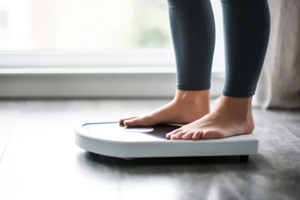[ad_1]
High cholesterol is a growing concern for many people seeking to maintain cardiovascular health. Characterized by excessive levels of LDL (bad) cholesterol and insufficient levels of HDL (good) cholesterol, this condition can gradually increase the risk of heart disease over time.
The good news is that making lifestyle changes — especially starting an exercise routine — can significantly improve your cholesterol profile and lower your risk of developing heart problems.
Understanding How Cholesterol Impacts Heart Health
Before exploring how exercise influences cholesterol, it’s helpful to understand why high cholesterol raises disease risk. Cholesterol is transported through the bloodstream by molecules called lipoproteins.
LDL cholesterol, in particular, can accumulate inside artery walls, leading to atherosclerosis — the buildup of plaque that narrows and hardens arteries.
HDL cholesterol has protective effects by transporting cholesterol back to the liver for processing. Ideal cholesterol levels depend greatly on individual risk profiles, but generally, the lower your LDL and the higher your HDL, the better.
Diet, family history, and lifestyle factors all impact the balance between LDL and HDL cholesterol.
How Physical Activity Helps Regulate Cholesterol
Aerobic exercise and strength training influence cholesterol levels and heart disease risk in several key ways:
Boosts HDL Cholesterol
Research conclusively shows that exercise increases blood levels of HDL cholesterol over time. This “good” cholesterol shuttles LDL particles back to the liver and ultimately out of the body. Even moderately intense aerobic exercise can bump up HDL.
Lowers LDL Cholesterol
Studies demonstrate that exercise helps reduce LDL cholesterol, particularly the small, dense LDL particles that are most damaging to arteries. This beneficial effect results from increased liver processing of LDL and better cellular cholesterol regulation.
Improves Triglycerides
Exercise has favorable effects on blood triglycerides, which are fats carried in lipoproteins that influence cholesterol levels. Lower triglyceride levels are tied to higher HDL and less arterial plaque buildup.
Enhances Lipoproteins
Beyond actual cholesterol levels, exercise induces structural changes. LDL particles grow larger in size while HDL particles shift to a healthy subtype associated with lower heart disease occurrence. These molecular adaptations help slow atherosclerosis.
Bolsters Weight Management
 Carrying excess body fat distorts cholesterol balance by increasing LDL and triglyceride levels. Exercise aids weight management by burning calories and building metabolism-boosting muscle. Shedding pounds can directly improve cholesterol status.
Carrying excess body fat distorts cholesterol balance by increasing LDL and triglyceride levels. Exercise aids weight management by burning calories and building metabolism-boosting muscle. Shedding pounds can directly improve cholesterol status.
Customizing Your Fitness Routine for Cholesterol Control
Exercise programs can be adapted in numerous ways to target cholesterol reduction. Consider the following key variables:
Intensity Levels
When designing an exercise routine to improve cholesterol, it’s important to incorporate workouts across a range of intensity zones:
- High intensity: Vigorous aerobic activities such as competitive sports, sprinting, or high-intensity interval training markedly boost HDL cholesterol while lowering LDL levels. These demanding workouts also improve cardiovascular endurance.
- Moderate intensity: Rhythmic exercises done at a brisk pace, including brisk walking, cycling, and swimming, provide excellent LDL-lowering and HDL benefits with less strain on the body. Most health organizations recommend routine moderate-intensity activities.
- Lower intensity: Gentle exercises such as leisure walking, stretching, and light resistance training positively contribute to physical activity goals. While cholesterol effects may be modest, engaging in some activity is better than being sedentary.
Duration Variation
Modulating the length of individual exercise sessions provides different benefits for cholesterol control:
- Shorter duration: Interval training, due to its intensity, can positively alter cholesterol levels with workouts as short as 10-15 minutes. Vigorous sports such as basketball or competitive tennis also confer heart health benefits despite the short duration.
- Moderate duration: To improve cholesterol substantially while avoiding overtraining and injury risk, aim for a cumulative 30-60 minutes of moderate-intensity aerobic activity most days of the week. This balanced approach yields lasting gains.
- Longer duration: Devoting over an hour continuously to lower-intensity exercises such as walking, swimming, or cycling enables greater calorie expenditure for weight management while still benefiting cholesterol status over the long term. Just be sure to progress gradually in duration.
Exercise Types to Mix In
To obtain maximum anti-cholesterol effects, blend together various forms of beneficial activities:
- Aerobic: Emphasize rhythmical medium-to-high intensity motions that engage large muscle groups and drive heart rate into target zones. Running, cycling, rowing, swimming, sports play, and high-energy dance styles qualify.
- Resistance Training: Incorporate light-to-moderate weightlifting using both free weights and resistance band systems. Building muscle boosts basal metabolism while favorably affecting cholesterol balance.
- Mind-Body: Gentle practices such as yoga, tai chi, and Pilates improve core strength, balance, and mental outlook and provide a mild aerobic challenge. They are helpful for recovery days.
Practical Strategies for Lasting Lifestyle Change
While the exercise guidelines for cholesterol management may seem complex, a few key tips make it easier to start and stick with regular workouts:
 Find enjoyable activities: Sustained adherence results from workouts you look forward to doing, not enduring due to obligation. Explore different options to learn your favorites.
Find enjoyable activities: Sustained adherence results from workouts you look forward to doing, not enduring due to obligation. Explore different options to learn your favorites.- Set realistic goals: Don’t expect overnight transformation or excessive strain on your body. Build gradually while celebrating small milestones week-to-week.
- Schedule exercise sessions: Carve out time slots devoted exclusively to physical activity for better follow-through. View them as any other important appointment.
- Vary your routine: Prevent boredom and overuse injuries by regularly introducing new elements into your training rather than repeating the exact same pattern continuously.
- Stay consistent: Sporadic bursts of exercise intermixed with prolonged sedentary periods won’t yield substantial cholesterol changes. Make activity a non-negotiable daily habit.
Craft Your Custom Fitness Prescription with Imperial Center Family Medicine
Controlling blood cholesterol through sensible exercise and lifestyle measures provides tremendous benefits well beyond the numbers on a screening panel.
By boosting HDL, reducing LDL and triglycerides, and sculpting a fit physique, you lower heart disease risk and feel more energetic to engage in healthy activities.
Work with Imperial Center Family Medicine’s experts to design an exercise schedule specially tailored to your needs, interests, abilities, and health goals.
Contact us today at 919-873-4437 or online, and let us help you improve your cholesterol balance and heart health by making movement a consistent part of everyday life.
[ad_2]
Source link
